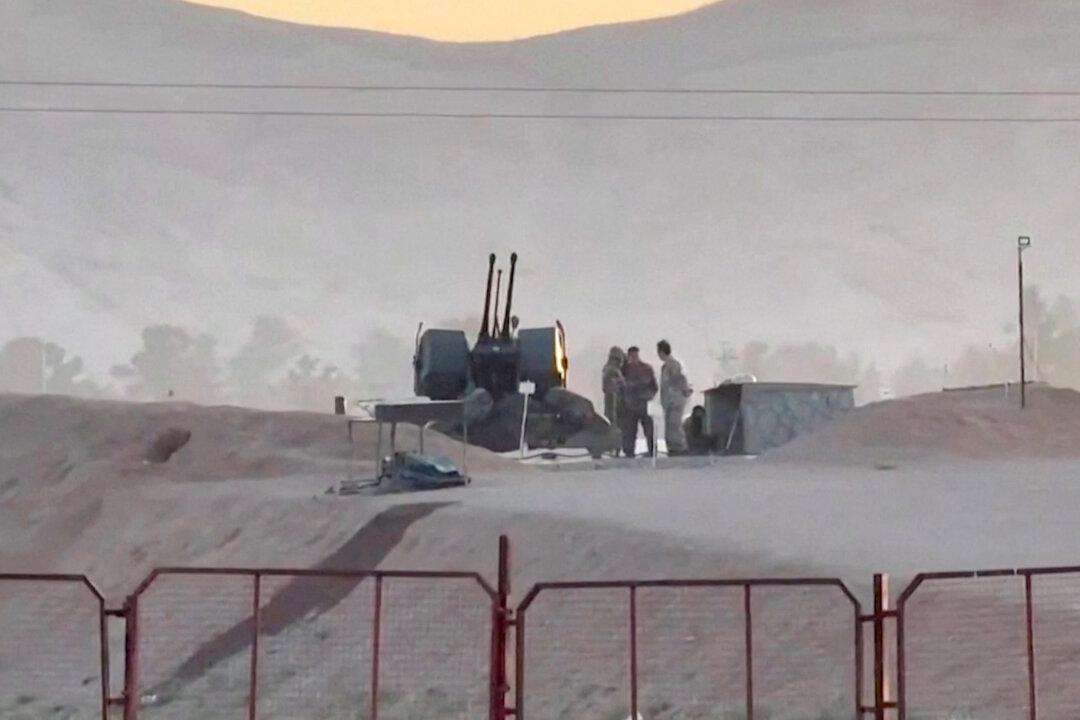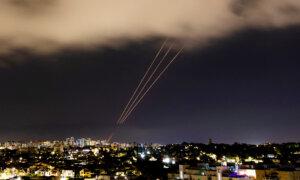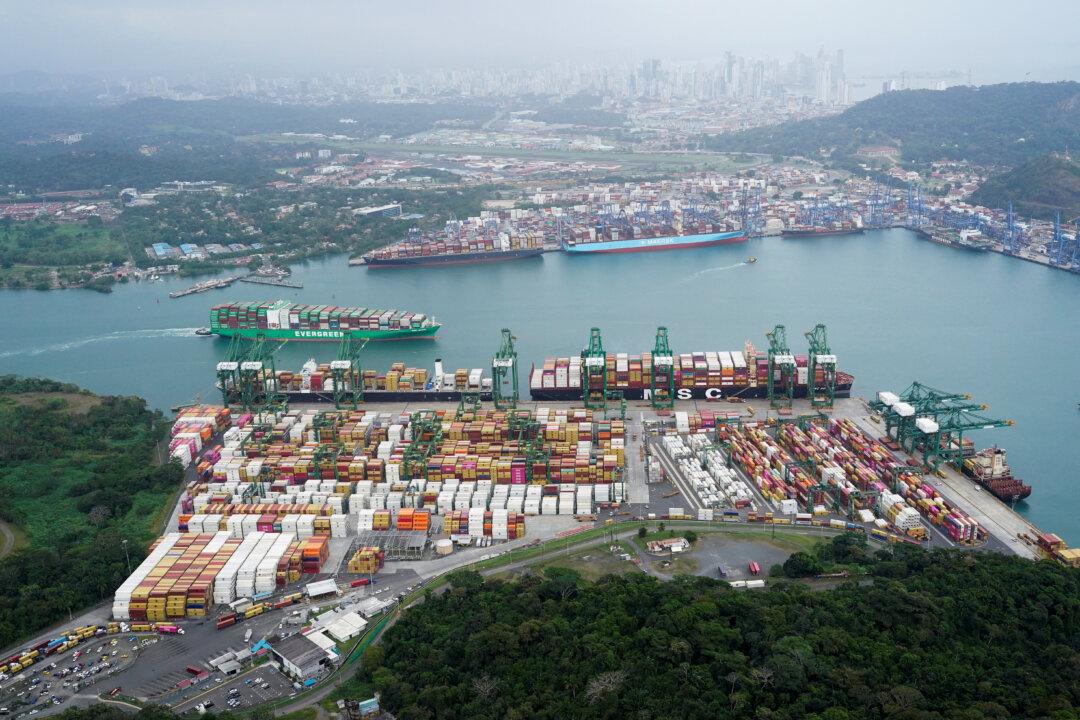Or it could be a path to gradual transformation of the region, back to stability.
So the present phase of Israel’s war against the extremist Sunni Palestinian group, Hamas, while engaging Iran as a backer of Hamas, is undertaken in the knowledge that Israel and Iran have been close allies in the past, and particularly until 1979 when the Shah of Iran was forced from office. The Shia clerics who took control of Iran after the fall of the Shah did embrace an anti-Israeli stance, but only really after the U.S.–Iraq war of 1990–91, when the United States had created a virtual encirclement or containment of Iran, causing the radical clerics in power to seek to build Iran’s own penetration of “the West” by causing a threat to Israel.
Of course, Iran also had its own geopolitical ambitions to create a landbridge across to the Mediterranean via Iraq, Syria, and Lebanon, something that would always be viewed with concern by Israel, at least as long as Iran was no longer the ally it had been under the Shah. And Iran had religious links into all three landbridge countries because of shared Shia populations there, enabling Tehran to build the Hezbollah Shiite militia in Lebanon into a proxy fighting force.
But the principal sponsors of Hamas, the group that controlled the Gaza Strip, were Turkey and Qatar, which each have governments espousing the Muslim Brotherhood (Ikhwan) cause. Hamas is a military wing of the Ikhwan, which has traditionally been anti-Shia. Moreover, Turkey, in particular, has long been a rival of Iran, from ancient times when the Ottomans and the Persians vied for domination of Central Asia.
So, just how relevant is this to the current conflict situation?
Some reasons are cosmetic, or superficial and political; some are substantive and involve foreign partners of both Israel and Iran, and engage a broader play of global trends.
Firstly, in the framework of a politically distorted year of a U.S. presidential election, the “diversion” of the emotionally charged Israel–Hamas war reporting, underway since Hamas began the war on Oct. 7, 2023, has enabled Israel to force Iran onto the world’s “front pages,” supplanting the Palestinian issue. There is little doubt that, in substantive terms, this also allows Israel to finally confront Iran directly for its indirect war against Israel over the past few decades. And, with the Iranian political situation in a delicate phase, this could well lead to popular discontent rising inside Iran against the clerics, removing them from office. Or it could create a rallying by Iranians around the government of their country, embattled by Israel.
The Israeli government of Prime Minister Benjamin Netanyahu is facing its own political crisis, quite apart from the war. The initial rallying of Israelis around a Government of National Unity following the galvanizing and deliberate inhumanity of the Oct. 7, 2023, terrorist attacks has given way to a segment of Israelis questioning the leadership of Mr. Netanyahu and with some of them supporting his removal.
But there are also sound reasons why the military escalation between Israel and Iran has occurred in the way that it did. Israel’s very pointed air attack on the Iranian consulate compound in Damascus on April 1, 2024, killing two senior Iranian Revolutionary Guard Corps (IRGC) officers, was clearly undertaken knowing that Tehran would be forced to respond. This was a deliberate attack by Israeli forces against Iranian sovereign territory (as the consulate represented), and could not be seen as other than an act of war.
How could Iran respond without creating further, and possibly uncontrollable, escalation to nuclear levels? Its response must be seen as sufficiently robust so as to ensure that Iranian prestige at home and abroad remained unscathed or, if possible, enhanced. It could not afford to show weakness under pressure.
The Iranian attack on Israel on the night of April 13–14, 2024, completely addressed that, ensuring that Israel and its allies (mainly the United States, United Kingdom, and Jordan) were well-prepared to handle the attack by unmanned aerial vehicles (suicide drones, or “loitering munitions”), cruise missiles, ballistic missiles, and rockets. Iran leaked its intentions to the United States and Israel, and then gave a specific warning when the weapons launched from Iran, giving several hours’ warning to the air defenses of Israel and its allies.
Moreover, Iran signaled that it was aiming its strikes at Israeli military targets only, ensuring that the sites could be cleared of Israeli high-value assets (like its F-35 fighters) and people. There were, as a result, and by design, no Israeli casualties, other than a Bedouin child who had wandered into the area. Honor was therefore satisfied by the strike, but that response, too, meant that Israel could not ignore the action.
But before getting into the counter-counter-reaction by Israel, it is worth demonstrating that Iran’s weapons were shown to be vastly inferior to Israeli defenses. This is something that the Iranians and the Israelis deliberately avoided trumpeting. It was well understood by the professionals.
Israel’s counter-counter-attack in Iran on April 19, 2024, was as delicately prepared as Iran’s attack was on April 13–14, 2024. Stand-off, air-launched land-attack missiles, apparently fired from Israel Air Force aircraft outside Iranian airspace, hit an air defense radar and missile site near an Iranian Air Force base at Isfahan, in central Iran, and a site near the Iranian nuclear facility at Natanz. Again, there was little or no human collateral damage, but it was a strongly made point, which was then played down by both Iran and Israel. Again, honor satisfied, and the situation was gradually de-escalating.
Israel, however, once again proved its superiority of arms by destroying a Russian-built S-300 surface-to-air missile system, including its radar, without being detected by the Iranian operators. So this was a significant message to both Iranians and Russians.
The Russians, too, are a vital element in this choreography, as are the Turks. Russia only in 2023 made a major breakthrough in the region, thanks to the Iranian clerics. Russia was able to “dip its toe” into the warm waters of the Indian Ocean—its goal for several hundred years of the “great game” with Britain for dominance over Central Asia and the northern Indian Ocean littorals—thanks to an agreement with Iran.
Iran signed on to Moscow’s International North-South Transport Corridor (INSTC), which enables riverine, rail, and sea traffic to carry freight from St. Petersburg, on the Baltic Sea (and therefore from the Arctic White Sea and the Atlantic) down through Moscow to Astrakhan on the northern Caspian Sea, and by rail and road through Dagestan and Azerbaijan to Iran, where a new, Russian-financed railroad would take freight on to Bandar Abbas, just outside the Strait of Hormuz, on the Indian Ocean’s Arabian Sea, and thence on to India. Or the reverse.
This prized international trade route eliminates the need for the Suez Canal and escapes the control of Western maritime nations. And, significantly, it avoids Turkey.
The United States, in 2023, counteracted with a plan to create the India–Middle East–Europe Corridor (IMEC), which proposed a sea link from India to the Persian Gulf’s southern shore ports in the United Arab Emirates and thence by rail across Saudi Arabia, and somehow to the Mediterranean and on to Europe. Again, it avoided Turkey. And Israel, Egypt, Jordan, Oman, and so on, were not signatories to the new IMEC project.
Turkey then responded by attempting to create yet another alternate trade route to and from the Indo-Pacific, through Iraq and (it is being proposed) newly conquered areas of Kurdish territory to Turkey, and thence on to the Mediterranean and Europe. Turkey is proposing to invade and dominate the Kurdish territory in Iraq and Syria within weeks and months.
In all of this, of course, Russia is extremely anxious that Iran should not be destabilized, lest its INSTC be disrupted, just at the time that Moscow has made this great breakthrough. Turkey, then, becomes the disruptor, anxious to ensure the failure of the INSTC and Washington’s IMEC.
There are many other elements playing into all of this, but there are great pressures for behind-the-scenes understandings, particularly by Israel, Russia, Iran, Syria, and possibly even the United States, to stop Turkish-inspired disruptions. This could well lead to a gradual withdrawal of Iranian aid to Hamas, and the resumption of the “front-and-center” role of Turkey in supporting Hamas.







